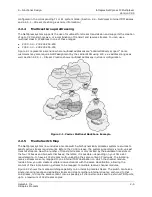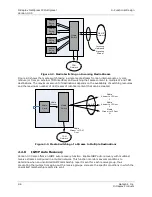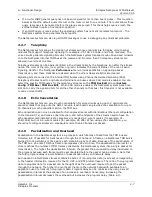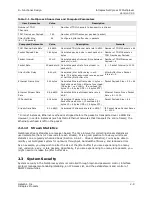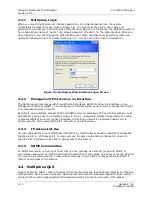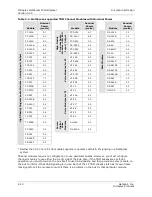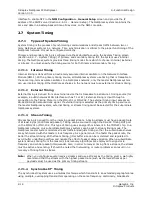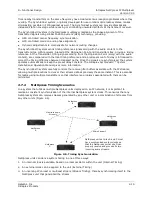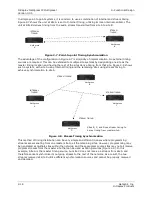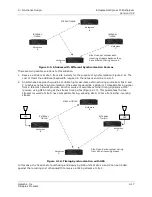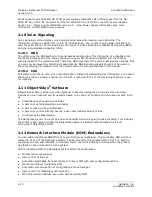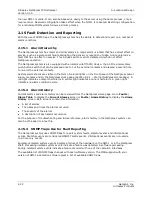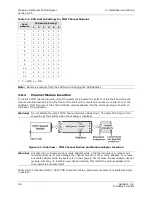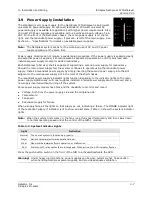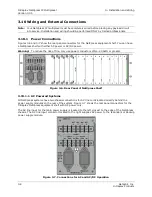
2—Functional Design
Intraplex NetXpress IP Multiplexer
Version 3.05
GatesAir, Inc.
2-15
Intraplex Products
from nearby transmitters on the same frequency have created serious reception problems where they
overlap. The SynchroCast system, originally developed for use in land mobile radio systems, makes
simulcasting possible in FM broadcast as well. The SynchroCast system can provide dramatically
increased station coverage while reducing or eliminating unwanted artifacts at the listener’s receiver.
The SynchroCast3 system in the NetXpress multiplexer maintains the phase alignment of the
transmitted signals using Global Position System (GPS) technology, providing
●
GPS controlled carrier frequency synchronization.
●
GPS controlled precision audio phase alignment.
●
Dynamic adjustments to compensate for network routing changes.
The SynchroCast3 system sends timing reference signals along with the audio content to the
transmitter sites. GPS receivers, placed at the Origination Point and transmitter sites, provide a timing
reference. At the Transmitter, timing signals coming from the Origination Point (along with the audio
content), are compared with the local timing reference and a precise amount of delay is introduced to
correct the timing difference between transport paths. Once the signals are synchronized, the system
operates automatically to keep the preset delay constant. The
Intraplex SychroCast3™ System
Installation & Operation Manual
gives more information.
The SynchroCast3 system carefully controls the receive jitter buffers associate with the IP streams,
allowing multiple locations to deliver their stream data at precisely the same instant. This is essential
for radios using multiple transmitters so that interference problems associated with them can be
minimized.
2.7.2
NetXpress Timing Scenarios
In a system that utilizes multiple NetXpress units deployed on an IP network, it is important to
maintain consistent synchronization of the internal NetXpress system clocks. This ensures that any
NetXpress system can receive streams generated by any other unit or a combination of streams from
any other units (Figure 2-6).
Figure 2-6. Timing Synchronization
NetXpress units can derive system timing in one of three ways:
1.
An internal clock is available, based on a local oscillator within the unit (Internal Timing)
2.
An external clock can be applied to the unit (External Timing)
3.
An incoming IP unicast or multicast stream (Stream Timing), thereby synchronizing itself to the
NetXpress unit that generated the stream
NetXpress
A
NetXpress
B
NetXpress
D
NetXpress
C
Multicast Audio
Stream 1
Audio Stream 2
NetXpress units at sites A and C must
have synchronized system clocks so
that the NetXpress unit at site D can
properly receive and process its two
incoming audio streams.
Содержание Intraplex NetXpress
Страница 2: ......
Страница 54: ...No header here 3 16 GatesAir Inc Intraplex Products This page is left blank intentionally...
Страница 146: ...No header here 4 92 GatesAir Inc Intraplex Products This page is left blank intentionally...
Страница 154: ...No header here 6 4 GatesAir Inc Intraplex Products This page is left blank intentionally...
Страница 163: ...No header here GatesAir Inc 7 9 Intraplex Products This page is left blank intentionally...





